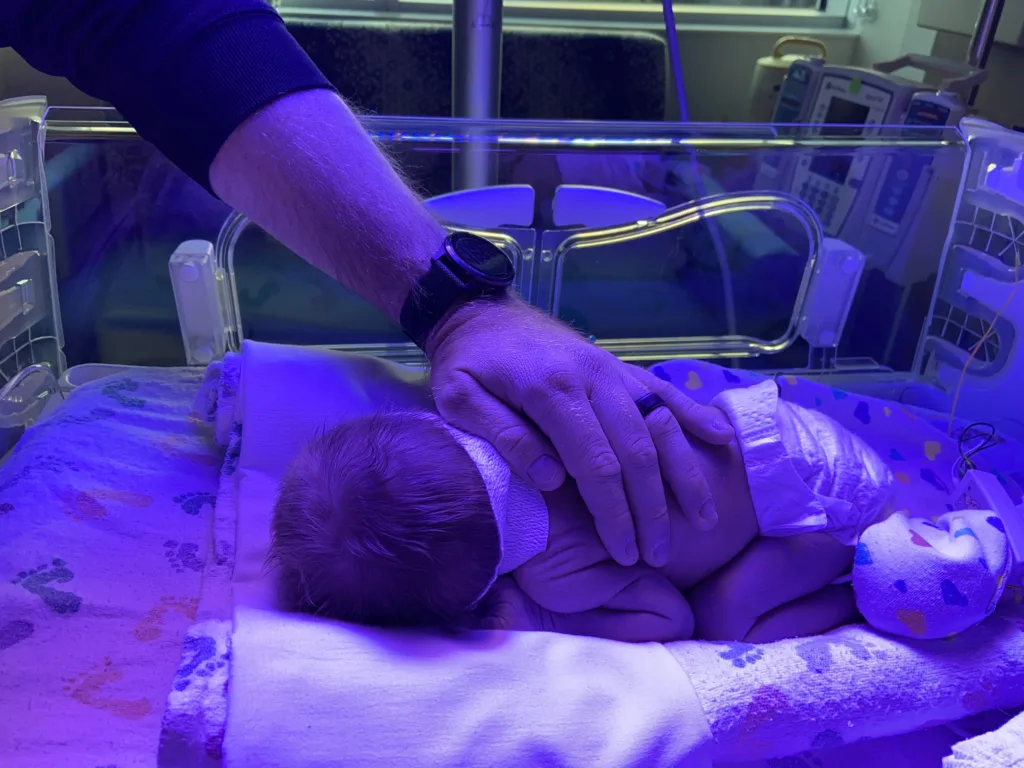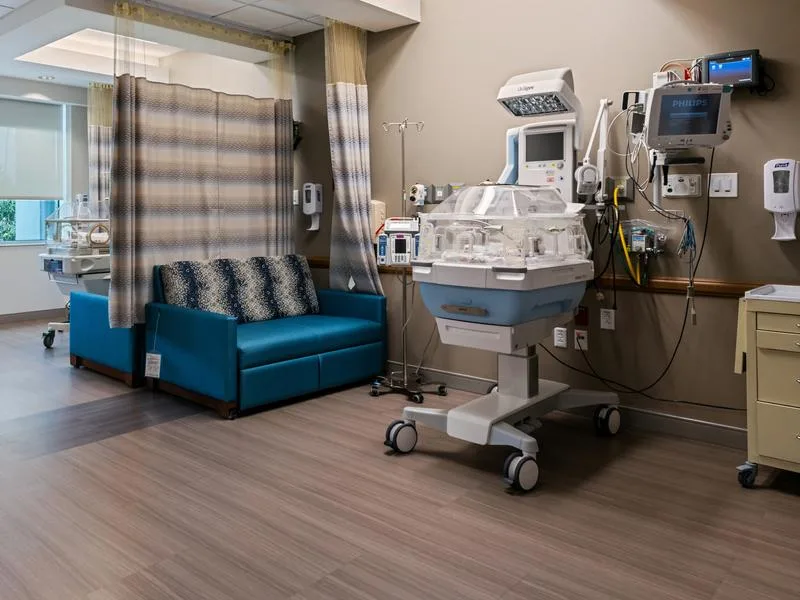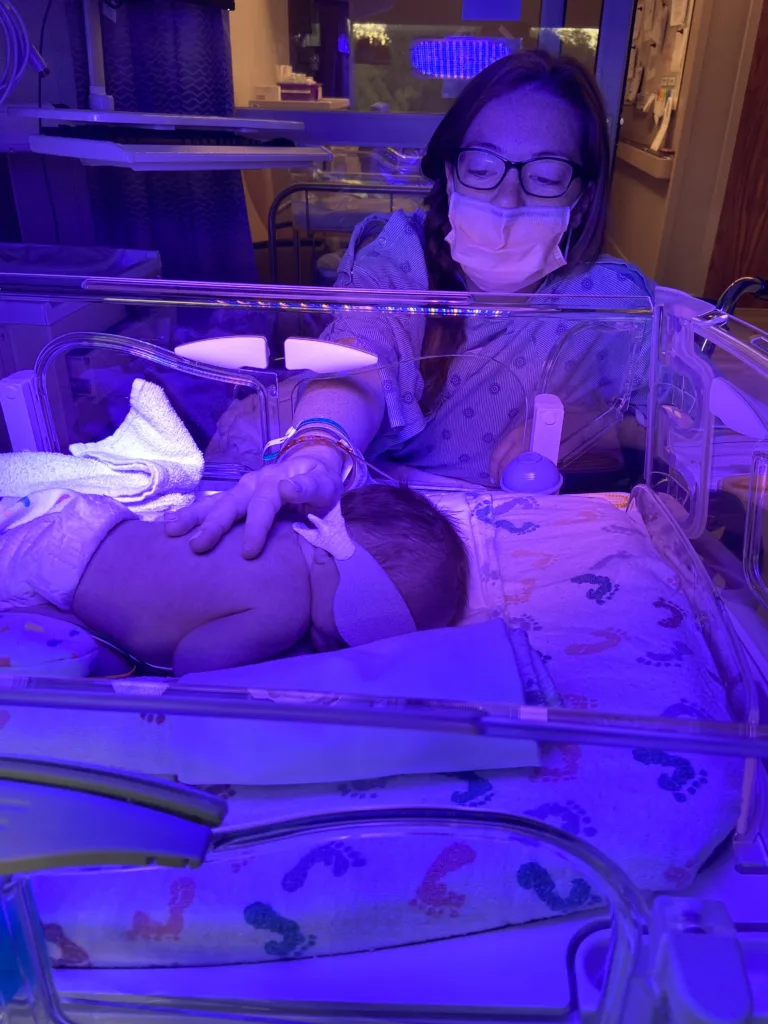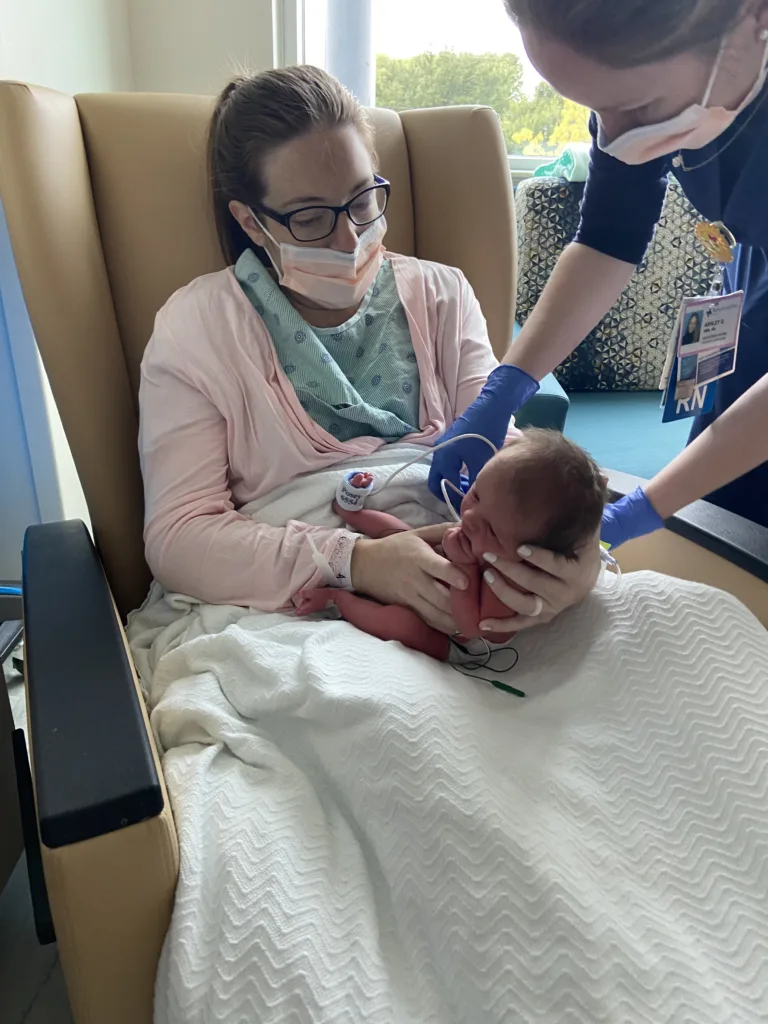Not everyone will need to go to the Neonatal Intensive Care Unit, NICU with twins. But, if you find yourself in a position where you’ll be likely to need time in NICU, the following guide can help you!
This guide aims to demystify the NICU experience, offering practical advice and support to prepare you for this journey.

Table of Contents
How to choose the right NICU with Twins
Selecting the appropriate NICU is paramount. The hospital my husband and I chose featured a level 3 NICU, freshly renovated, catering to our family’s needs.
It’s crucial to research and discuss with healthcare providers to ensure the facility aligns with your expectations and requirements. This process underlines the significance of making an informed decision for your twins’ care.
Ask questions about the arrangement of the rooms. Are they private? Each of our twins had their own adjacent rooms with a couch and a chair for us to relax on.

Photo: Baylor Scott & White NICU
What do all of these NICU levels mean?
NICUs are categorized from level 1 to 4, with level 4 providing the most intensive care.
Knowing the capabilities of each level ensures that, should the need arise, your twins receive the best possible care tailored to their needs.
We had our twins at a hospital that provided a level 3 NICU.
We knew that if they needed more intensive care when they were born, that the hospital would transport us to a level 4 NICU that was nearby.
How to navigate insurance coverage for a NICU stay
Dealing with insurance can be frustrating, but it is a necessary step that can save you money.
Our insurance covered us for a level 4 NICU, if necessary, relieving some of our stress. Verifying your insurance coverage in advance is crucial to avoid financial strain during an already stressful time.
Go online to your insurance website or app to search for in-network hospitals. If it’s easier to call, it might be faster to connect to a person and ask your coverage questions.

How to prepare for a NICU experience with twins
Sharing our story, Baby A spent 2 weeks in the NICU, while Baby B was there for a week. They were healthy, but premature at just 34 weeks and 4 days.
They needed to be monitored and gain weight. Babies like this are called growers & feeders. This is a good thing. Our Twin A had to gain weight until she reached 4 pounds and at that weight, could safely go home in a car seat.
We were prepared to care for our babies if one got released to go home before the other by having family members on hand to help watch them.
Our hospital did not allow other small children, including our recently released twin, to come back to the NICU for visits with our other twin who was still in.
This is one of the important questions you should ask whenever calling hospitals to do your research. I’ve included this on your NICU research checklist that you can download here for free.
Preparation and open communication with your medical team are key to managing this journey. Every NICU experience is unique, but knowing there’s a community out there for support can provide immense comfort.
If you need a support community, please join ours, here.

How to find community support
Joining a private community of parents who’ve faced similar experiences can be incredibly beneficial. We invite you to join our Twin Baby Registry Private Support Community.
The value of shared experiences and advice cannot be overstated in navigating the challenges and joys of raising twins.
Navigating your twins’ NICU stay can be challenging, but with the right preparation, understanding, and support, it’s a journey you won’t have to face alone.
Remember, seeking out resources, connecting with a supportive community, and communicating with your healthcare providers are key steps in ensuring the best care for your twins.
Happy Planning!
Shelby

Leave a Reply